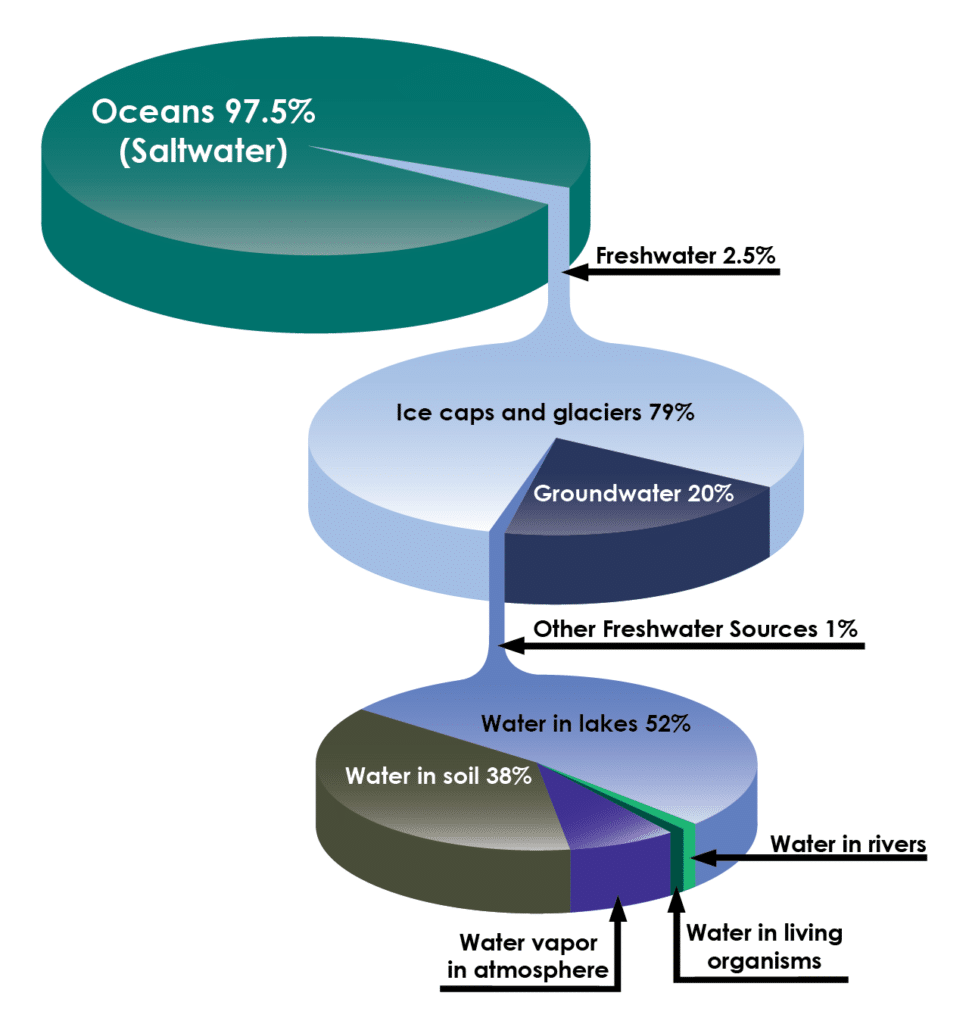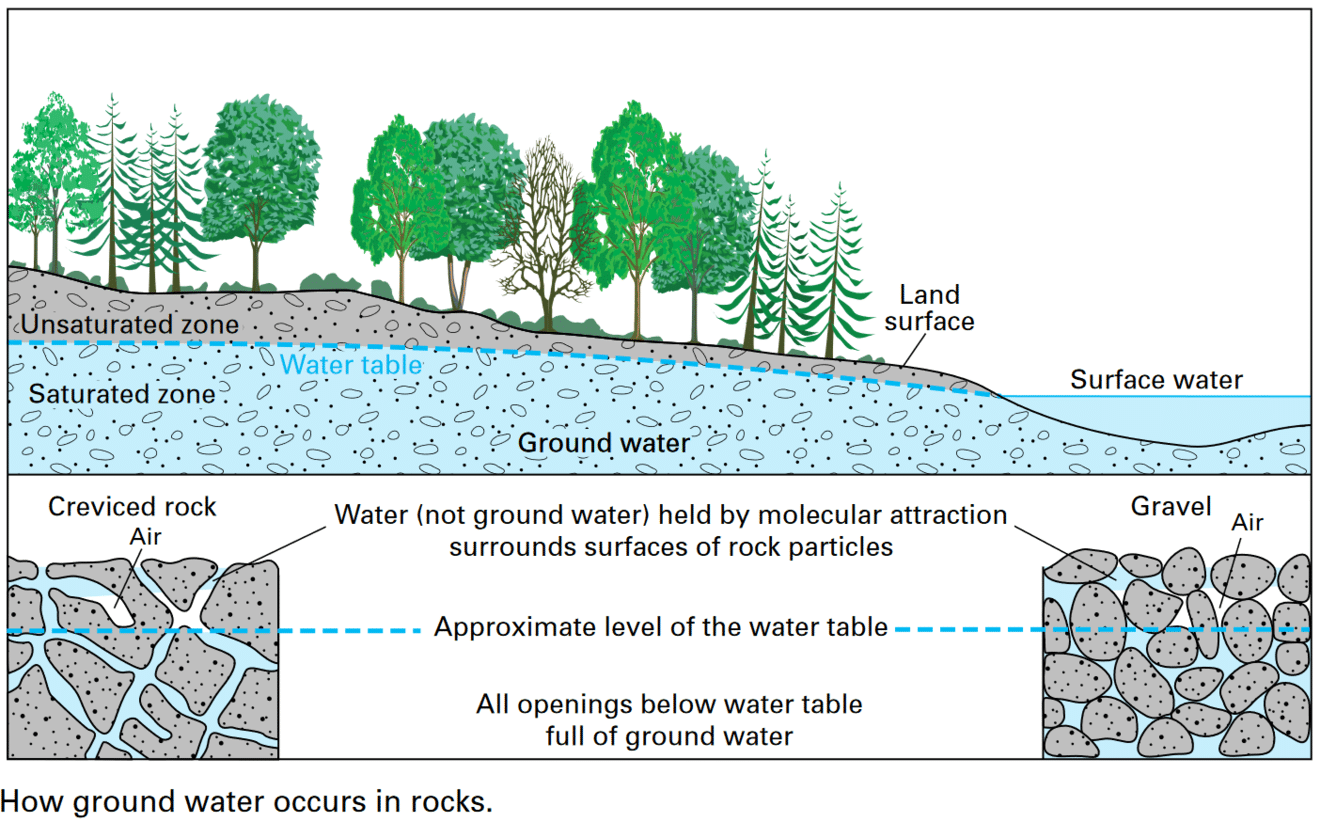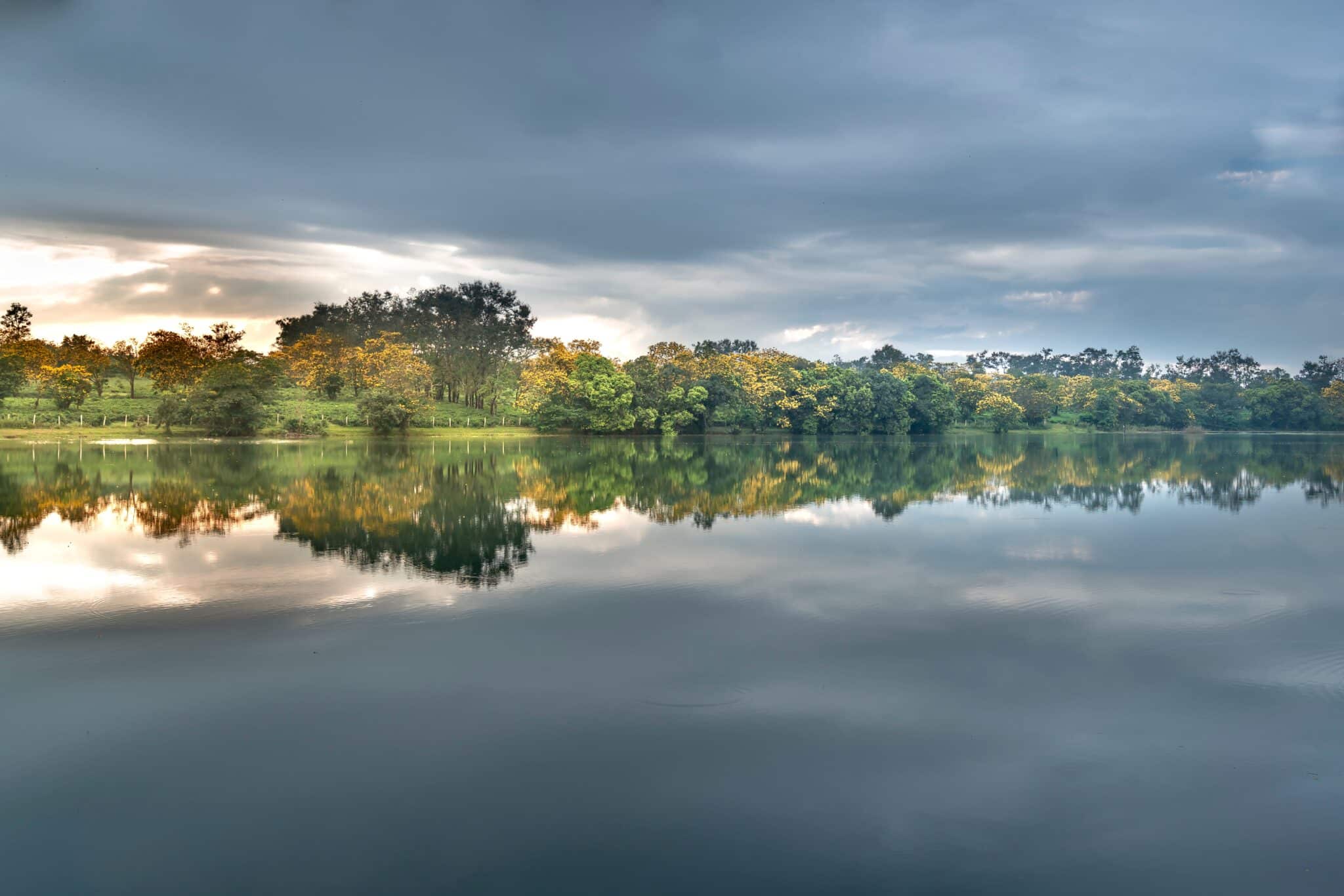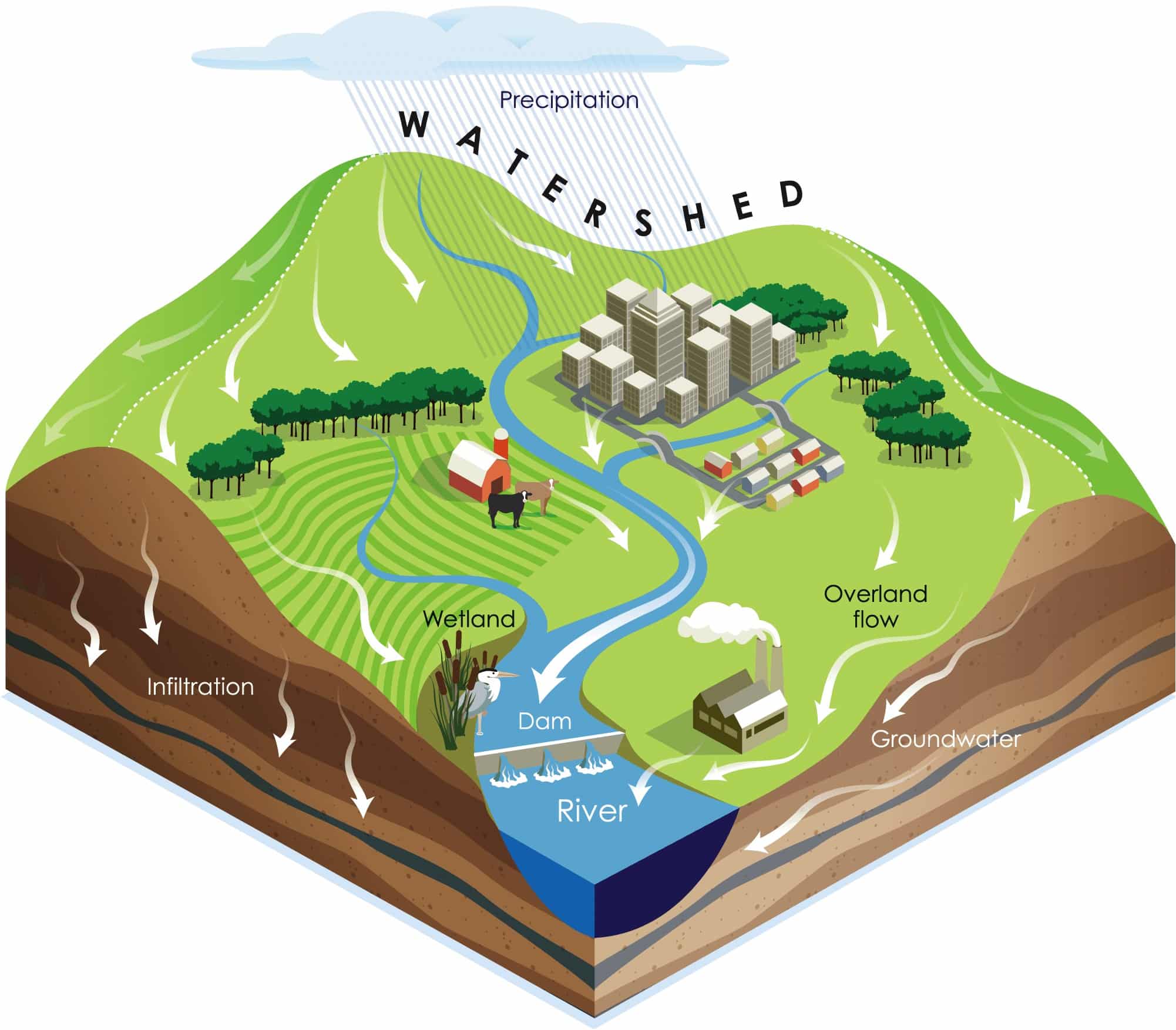Have you ever heard the saying "water water everywhere, but not a drop to drink"? Well, that's not totally true here, but pretty close! Almost 71% of the Earth's surface is covered in water, but most of that -- 97.5% -- is saltwater. That means that only 2.5% of the water found on Earth is freshwater available to keep all living things alive. And that freshwater is dispersed around the world -- frozen in glaciers and ice caps; underground in soil and aquifers; and in lakes, rivers, and other forms of surface water.


Groundwater
Groundwater refers to the freshwater found below the surface of the Earth. It makes up about 20% of freshwater resources on the planet and is a valuable source of drinking water for humans. Groundwater is found in soil, and in underwater reservoirs called aquifers. When it rains and water soaks into the ground, it contributes to or "charges" these aquifers. Water from aquifers sometimes reaches the surface as a freshwater spring, or humans tap into these water sources by drilling wells.
Surface Water
Water that accumulates on the surface of the Earth, in places like lakes, streams, reservoirs, rivers, wetlands, and even snowpack, is considered surface water. Surface water is where we fish, recreate, and often get water to drink. As you can imagine, surface water is also the most exposed to environmental contaminants when other sometimes harmful substances run off of the ground and into these bodies of water.


Watersheds
A watershed is an area of land where water drains into a common pool. Imagine a bowl -- any drop that hits the side of that bowl will flow to the lowest point. That is a watershed. Where water goes when it falls to the ground as rain depends on what watershed it's falling on, and how the land is being used in that watershed.
Watersheds can be big or small and can include many different uses of land in that area. As you might imagine, water running over parking lots or farm fields or forests will pick up different kinds of substances before they reach the body of water -- some of which are helpful, some of which are harmful to other living things.


